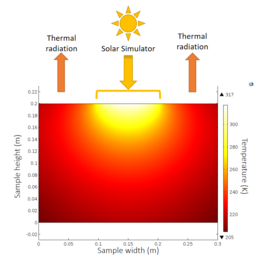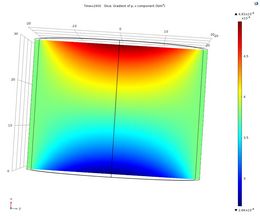Simulations
Numerical simulations are essential to better understand comets. Models have been build to simulate the formation of cometary nuclei from its primitive building blocks. They also have been used to model their orbit around the sun and their evolution through time. Finally numerical models are extremely useful to characterize and constrain the main properties that affect comet activity.
In the frame of CoPhyLab numerical models will be developed in parallel to the laboratory experiments to constrain the physical properties of the samples and identify the processes taking place over and within these samples.
Numerical models will be built specifically to investigate:
- The thermal properties of the samples. Samples of dust and water ice will be exposed to the light produced by a solar simulator and we will measure the change in temperature inside the sample with the help of heat sensors. We will then build a model that will try to match these temperatures. Once a match is found the thermal properties (how much the materials conducts heat) will be identified.
- Gas transport in porous materials in low pressure environments. Gas transport through high porosity granular materials is measured in experiments where the gas permeability and the Knudsan diffusion coefficient the effective porosity are determined. Then with a finite element method using the Darcy equation and the Klinkenberg relation the gas flow in such materials is simulated.
- Gas and particle ejection. Using physical equations it is possible to evaluate the quantity and speed of gas that will be ejected by an icy surface that is heated by a solar simulator. Is is then also possible to model the particles of dust and ice that are dragged away from the surface by this escaping gas. These models can be compared to the observed activity on our samples to try to better understand cometary activity.
The end result of this work will be to develop numerical models that reproduce correctly the observation in the lab. Once this is accomplished these models will be used with data from cometary missions to investigate the properties of real comets.

